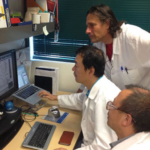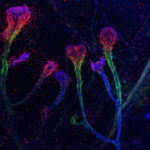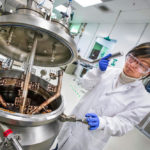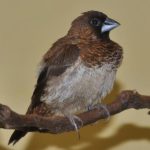The Biosciences Area is pleased to announce that Adam Deutschbauer and Diane Dickel have agreed to take on new leadership positions in the Environmental Genomics & Systems Biology (EGSB) Division. Deutschbauer, previously the department head of Functional Genomics, is rising to the position of EGSB co-deputy for science, and Dickel will assume the role of … Read more »
Study Finds Potential New Biomarker for Cancer Patient Prognosis
A new study, led by Gary Karpen of the Biological Systems & Engineering (BSE) Division, links the overexpression of 14 genes related to cell division to cancer patients’ prognosis and response to specific treatments. The researchers said the findings, published today in the journal Nature Communications, could lead to a new biomarker for the early stages of tumor development. The information obtained could help reduce the use of cancer treatments that have a low probability of helping.
The research team included lead author Weiguo Zhang and Jian-Hua Mao of BSE; collaborators Wei zhu and Anshu Jain; and Ke Liu and James (Ben) Brown of the Environmental Genomics & Systems Biology Division. Read more on the Berkeley Lab News Center.
Outside In: The Secret Life of Galectin-1 and its Dual Role in the Breast
Whenever sugars are mentioned in relation to health and disease, it is in the context of metabolism and gaining calories. However, sugars have many other functions in our physiology and are found on cell surfaces and in extracellular matrix (ECM), forming an integral part of tissue microenvironment. Here they bind to their partner ligands, known as lectins, forming lectin-sugar interactions that have been known to play important roles in physiological and pathological contexts. In an article published and featured on the cover of Proceedings of the National Academy of Science (PNAS) last week, the laboratory of Distinguished Scientist Mina Bissell in the Biological Systems and Engineering Division of Lawrence Berkeley National Laboratory (Berkeley Lab), in collaboration with the research group of Professor Carolyn Bertozzi, now at the Stanford University Department of Chemistry, report exciting data and new insights into the roles a lectin, Galectin-1 (Gal-1), plays in mammary gland branching morphogenesis. This work also sheds some light on breast cancer progression.
ABPDU Partners with Small Businesses in DOE Pilot
Through the second round of the U.S. Department of Energy (DOE) Small Business Vouchers Pilot, eight small businesses have been awarded vouchers, totaling $1.1 million, to work with Berkeley Lab to bring their next-generation clean energy to the marketplace faster. The vouchers pay for expertise and use of facilities that help small businesses advance their technologies toward commercialization. Several Biosciences partnerships were established: Mango Materials and Zymochem bioenergy projects were awarded vouchers to work with the Advanced Biofuels Process Demonstration Unit (ABPDU). Also, a Heliobiosys project will be performed using the capabilities of both the ABPDU and Sandia National Laboratories. The Lab was chosen by the DOE as one of five national laboratories to lead the pilot and was named a lead lab in the Advanced Manufacturing, Fuel Cells, Geothermal and Vehicle technology areas.
How Does a Bird Know What’s Coming Next?
Bengalese finches, songbirds that have been used to research the learning, perception, and production of bird song, are the model system used by Berkeley Lab scientist Kristofer Bouchard and Michael Brainard of UC San Francisco to determine the relationship between song sequence structure and brain activity. As reported in their PNAS article published last week, “Auditory-induced neural dynamics in sensory-motor circuitry predict learned temporal and sequential statistics of birdsong,” the researchers studied how the birds brain forms predictions for the timing and identity of specific “syllables” that it has learned to sing.
- « Previous Page
- 1
- …
- 47
- 48
- 49
- 50
- 51
- …
- 62
- Next Page »
Was this page useful?








